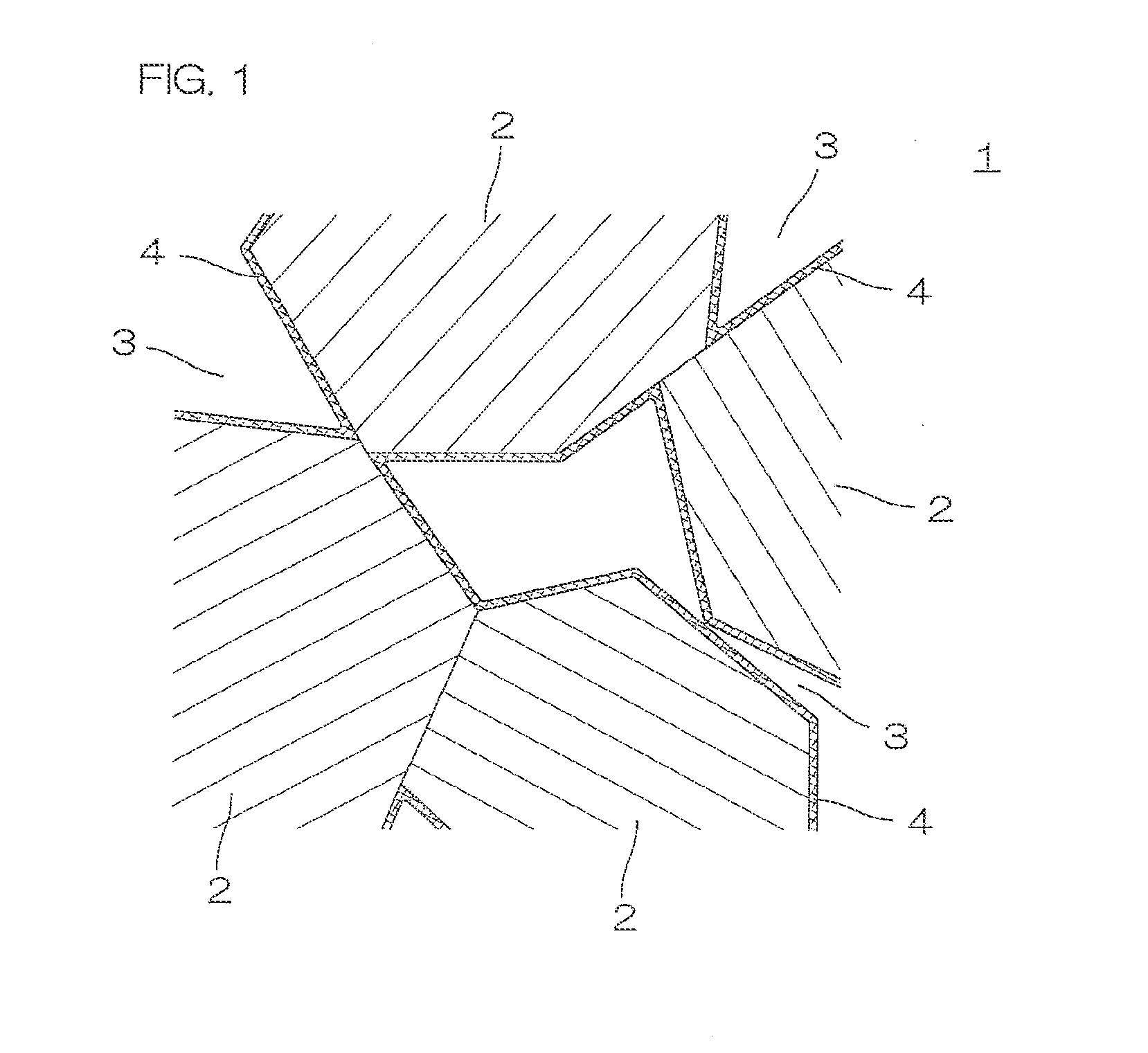Semiconductor element mounting member, method of producing the same, and semiconductor device
- Summary
- Abstract
- Description
- Claims
- Application Information
AI Technical Summary
Benefits of technology
Problems solved by technology
Method used
Image
Examples
examples 2 to 7
[0263]A diamond-Cu complex serving as a precursor of the semiconductor element mounting member was obtained in the same way as in Example 1 except for the fact that the volume ratio between the diamond particles and the Cr powder was adjusted so that the content percentage of Cr was 0.11 volume % (Example 2), 1.25 volume % (Example 3), 5.5 volume % (Example 4), 7 volume % (Example 5), 16 volume % (Example 6), and 21 volume % (Example 7) of the total amount of Cr and the diamond particles.
[0264]The mixing ratio of the ammonium chloride powder was adjusted so that the atomic ratio M / X maintained 1 / 2.7.
examples 8 and 9
[0265]A diamond-Cu complex serving as a precursor of the semiconductor element mounting member was obtained in the same way as in Example 1 except for the fact that the mixing ratio of the ammonium chloride powder was adjusted so that the atomic ratio M / X was 1 / 1.7 (Example 8) and 1 / 2.1 (Example 9).
[0266]The volume ratio between the diamond particles and the Cr powder was set to be 95:5. The content percentage of Cr was 5 volume % of the total amount of Cr and the diamond particles.
[0267]In Example 8, unevenness occurred in the infiltration auxiliary layer, and therefore many bubbles were observed after the infiltration of Cu.
examples 10 to 14
[0268]A diamond-Cu complex serving as a precursor of the semiconductor element mounting member was obtained in the same way as in Example 1 except for the fact that diamond particles having a mean particle diameter of 0.6 μm (Example 10), 3 μm (Example 11), 11 μm (Example 12), 48 μm (Example 13), and 193 μm (Example 14) were used as the diamond particles.
[0269]The volume ratio between the diamond particles and the Cr powder was set to be 95:5. The content percentage of Cr was 5 volume % of the total amount of Cr and the diamond particles.
[0270]Additionally, the mixing ratio between the Cr powder and the ammonium-chloride powder was 1 / 2.7 that was expressed as the atomic ratio M / X.
[0271]In Example 14, a major defect that was caused by the drop-off of diamond particles during grinding was observed.
PUM
| Property | Measurement | Unit |
|---|---|---|
| Temperature | aaaaa | aaaaa |
| Thickness | aaaaa | aaaaa |
| Diameter | aaaaa | aaaaa |
Abstract
Description
Claims
Application Information
 Login to View More
Login to View More - R&D
- Intellectual Property
- Life Sciences
- Materials
- Tech Scout
- Unparalleled Data Quality
- Higher Quality Content
- 60% Fewer Hallucinations
Browse by: Latest US Patents, China's latest patents, Technical Efficacy Thesaurus, Application Domain, Technology Topic, Popular Technical Reports.
© 2025 PatSnap. All rights reserved.Legal|Privacy policy|Modern Slavery Act Transparency Statement|Sitemap|About US| Contact US: help@patsnap.com


